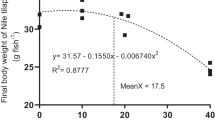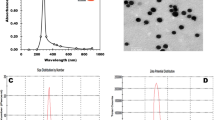Abstract
This experiment was conducted to evaluate the effect of zinc (Zn)-yeast supplementation on growth performance, antioxidant, and immune status of growing Sahiwal calves. Eighteen Sahiwal calves were selected on age (8.95 ± 0.18 month) and body weight (120 ± 2.32 kg) basis and randomly distributed into three dietary treatments (n = 6). The feeding regimen was similar in all the treatments except that calves in ZY0 group were fed on a basal diet without Zn yeast, in ZY40 group were fed on a basal diet supplemented with 40 mg/kg DMI supplemental Zn, and in ZY60 group were fed on a basal diet supplemented with 60 mg/kg DMI supplemental Zn for 90 days. The results showed that dietary Zn supplementation increased weight gain and average daily gain (P < 0.05). The average daily feed intake and feed conversion ratio, however, was not affected by dietary Zn supplementation. Plasma concentration of total immunoglobulin and total antioxidant activity was increased with dietary Zn supplementation (P < 0.05) and reported higher in the calves of ZY60 group. Superoxide dismutase, catalase, and thiobarbituric acid reactive substance (TBARS), on the contrary, were decreased with Zn supplementation, and its value was reported lower in the ZY60 group. In conclusion, Zn supplementation as Zn yeast improved growth performance, immune response, and reduced anti-oxidative enzymes and TBARS in Sahiwal calves.







Similar content being viewed by others
References
Underwood EJ, Suttle NF (1999) The mineral nutrition of livestock, 3rd edn. CABI Publishing CAB International, Wallingford, Oxon, UK
Hendy HAE, Yousef MI, El-Naga NIA (2001) Effect of dietary zinc deficiency on hematological and biochemical parameters and concentrations of zinc, copper, and iron in growing rats. Toxicology 167:163–170
Shankar AH, Prasad AS (1998) Zinc and immune function: the biological basis of altered resistance to infection. Am J Clin Nutr 68:447S-463S
Powell SR (2000) The antioxidant properties of zinc. J Nutr 130:1447s–1454s
Chasapis CT, Loutsidou AC (2012) Zinc and human health: an update. Arch Toxicol 86:521–534
Strnadov P, Svobodova V, Pavlata L, Misurova L, Dvorak R (2011) Effect of inorganic and organic zinc supplementation on coccidial infections in goat kids. Acta Vet Brno 80:131–137
Stehlik-Tomas V, Gulan Zeti V, Stanzer D, Grba S, Vahi N (2004) Zinc, copper and manganese enrichment in yeast Saccharomyces cerevisiae. Food Technol Biotechnol 42:115–120
NRC (National Research Council, Nutrient) (2001) Requirements of dairy cattle, 7th edn. National Academy Press, D.C, Washington
AOAC (Association of Official Analytical Chemists) (1995) Official methods of analysis, 18th edn. Arlington (Virginia), New York
Van Soest PJ, Robertson JB, Lewis BA (1991) Methods for dietary fiber, neutral detergent fiber and non-starch polysaccharides in relation to animal nutrition. J Dairy Sci 74:3583–3597
McEvan AD, Fisher EW (1970) A turbidity test for the estimation of immunoglobulins levels in neonatal calf plasma. Clinica Chemica Acta 17:155–165
Feldman BF, Zinkl JG, Jain NC (2000) Schalm’s veterinary hematology, 5th edn. Lippincott Williams and Wilkins, Philadelphia, USA, p p1344
Jain NC (1986) Schalm’s veterinary haematology, 4th edn. Lea and Febrigen, Philadelphia, USA, pp 34–50
Marklund S, Marklund G (1974) Involvement of the superoxide anion radical in the autoxidation of pyrogallol and a convenient assay for superoxide dismutase. European J Biochem 47:469–476
Aebi H (1983) Catalase. In: Berg Meyer HU (ed) Methods of enzymatic analysis. Verlag Chemie, Weinhem, pp 273–286
Asakawa T, Matsushita S (1979) Coloring condition of thiobarbituric acid test for detecting lipid hydroperoxide. Lipids 15:137–140
Benzie EFI, Strain JJ (1999) Ferric reducing/antioxidant power assay: direct measurement of total antioxidant activity of biological fluids and modified version for simultaneous measurement of total antioxidant power and ascorbic acid concentration. Methods Enzymol 209:15–27
Kumar A, Sahu DS, Chandra G, Yadav SP, Kumar R, Jaiswal V, Maurya PS, Singh RK (2018) Effect of different sources of zinc on growth performance and haemato-biochemical profiles of Murrah Buffalo calves. Indian J Anim Nutr 35:409–414
Cope CM, Mackenzie AM, Wilde D, Sinclair LA (2009) Effect of level and form of dietary zinc on dairy cow performance and health. J Dairy Sci 92:2128–2135
Mandal GP, Dass RS, Isore DP, Garg AK, Ram GC (2007) Effect of zinc supplementation from two sources on growth, nutrient utilization and immune response in male crossbred cattle (Bos indicus×Bos Taurus) bulls. Anim Feed Sci Technol 138:1–12
Izhboldina SI (1994) Trace elements during rearing and fattening of young bulls. Zootekhniya 33:14
Chandra G, Aggarwal A, Kumar M, Singh AK, Sharma VK, Upadhyay RC (2014) Effect of additional vitamin E and zinc supplementation on immunological changes in peripartum Sahiwal cows. J Anim Physiol Anim Nutr 98:1166–1175
Prasad AS (2008) Zinc in Human Health: effect of Zinc on Immune Cells. Mol Med 14:353–357
Kinal S, Korniewicz A, Jamroz D, Zieminski R, Slupczynska M (2005) Dietary effects of zinc, copper and manganese chelates and sulphates on dairy cows. J Food Agric Environ 3:168–172
Sharma MC, Joshi C (2005) Therapeutic efficacy of zinc sulphate used in clustered model treatment in alleviating zinc deficiency in cattle and its effect on hormones, vitamins and production parameters. Vet Res Commun 29:609–628
Gharekhani A, Takami GA, Tukmechi A, Nasab MA, Agh N (2015) Effects of diet supplementation with zinc enriched yeast on blood indices and some biochemical parameters in rainbow trout (Oncorhynchus mykiss). BFAIJ 7:940–944
Chandra G, Aggarwal A, Singh AK, Kumar M, Upadhyay RC (2013) Effect of vitamin E and zinc supplementation on erythrocyte antioxidant enzymes and plasma total antioxidant activity in Sahiwal cows. Indian J Dairy Sci 66:412–417
Sadegh Z, Moradi H, Asadi S, Aabbasalipourkabir R, Ziamajidi N (2017) Study of the effect of zinc oxide on enzymatic antioxidant activity in male rats. Pajouhan Sci J 15(3):29–35
Goel A, Dani V, Dhawan DK (2005) Protective effects of zinc on lipid peroxidation, antioxidant enzymes and hepatic histoarchitecture in chlorpyrifos-induced toxicity. Chem-Bio Interact 156:131–140
Dresler S, Illek J, Zeman L (2016) Effects of organic zinc supplementation in weaned calves. Acta Vet Brno 85:049–054
Acknowledgments
The financial assistance provided by Hon’ble Vice-Chancellor and Director Research, Sardar Vallabhbhai Patel University of Agriculture and Technology, Meerut, India, for conducting this research work is thankfully acknowledged.
Author information
Authors and Affiliations
Corresponding author
Ethics declarations
Conflict of interest
The authors declare that they have no conflict of interest.
Additional information
Publisher's Note
Springer Nature remains neutral with regard to jurisdictional claims in published maps and institutional affiliations.
Significance Statement Zn supplementations in form of Zn yeast with a rate of either 40 or 60 mg/kg DM improved growth, immunity, and reduced antioxidant enzymes and lipid peroxidation of growing Sahiwal calves. Its dietary use is economically feasible for farmers.
Rights and permissions
About this article
Cite this article
Kumar, V., Sahu, D.S., Ali, N. et al. Influence of Zinc Yeast Supplementation on Growth Performance, Antioxidant, and Immune Status of Growing Sahiwal Calves. Proc. Natl. Acad. Sci., India, Sect. B Biol. Sci. 91, 373–379 (2021). https://doi.org/10.1007/s40011-021-01228-z
Received:
Revised:
Accepted:
Published:
Issue Date:
DOI: https://doi.org/10.1007/s40011-021-01228-z




